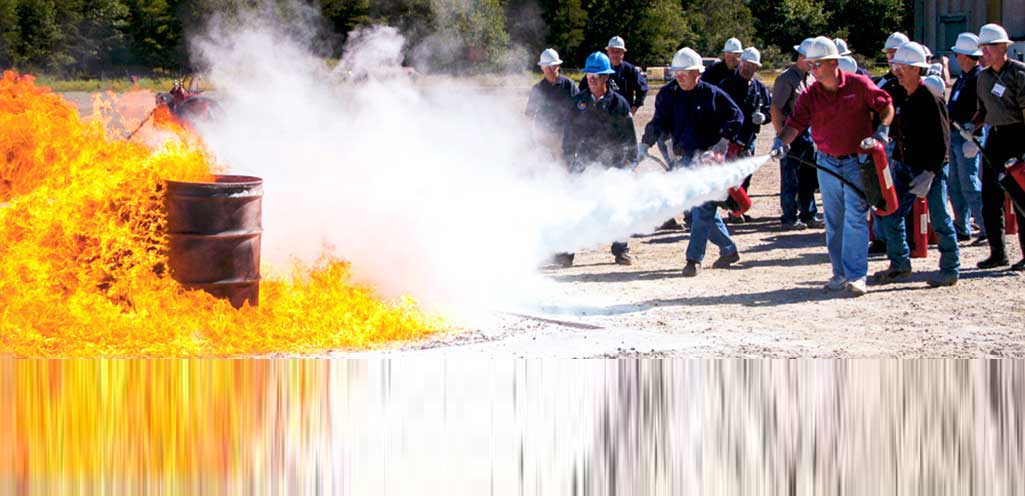
Sponsored
The Fire Emergency Mindset
ANSUL® Fire School delivers hands-on training for head-on response
Response is action. It really is that simple, and it’s happening to each of us every hour of every day. Most of the time, events and responses have little impact on our daily lives. Some of these responses are even instinctual and go unnoticed. Fire emergencies in industrial and manufacturing settings, however, present firefighting staff with events that require them to respond with great skill and alertness – that is, beyond instinct.
In other words, to be successful in helping to protect coworkers from harm or death and minimizing property damage, firefighting staff must achieve a level of performance and confidence above that of just going through routine motions.
Given their responsibility as the first line of defense against industrial fires, firefighting staff are busy groups. The National Fire Protection Association, in its April 2016 report, Fires in Industrial or Manufacturing Properties, found from 2009 to 2013 “an estimated 37,000 fires in industrial and manufacturing properties were reported to U.S. fire departments per year,” along with “$1 billion in property damage per year.”
Class B fire events, as taught at the world renowned ANSUL® Fire School in Marinette, Wis., have their own idiosyncrasies because of the volatility and variety of the fuels involved. Given the abundance of flammable liquids and unique industrial and manufacturing environments, it is imperative for firefighting staff to understand how a wide variety of Class B fires behave.
“Anyone who is part of an industrial fire brigade or firefighting staff should be coming to us for Class B fire training,” said Gary Guenette, ANSUL fire instructor. “As soon as you change what’s fueling that fire on your premises, everything changes. That means everything from the type of extinguisher you use, to its operation, to how you apply the agent given the environment, and even how you maintain and recharge the extinguisher.”
The ANSUL Fire School, as its name suggests, is part of the globally recognized ANSUL brand of premium fire protection products. With the primary focus on Class B fire events, firefighting staff attending the three-day training program get extensive hands-on experience with emphasis on the company’s RED LINE cartridge-operated hand portable and wheeled dry chemical extinguishers.
Beginning with an overview of the basic principles of extinguishers and extinguisher-based firefighting, ANSUL fire instructors cover fire theory and classification. At that point, trainees are introduced to the 27-acre fire grounds where the learning comes alive.
“Every trainee that comes through our program gets live, real world exposure to over 20 different fire scenarios,” said Guenette. “We put the extinguisher in each trainee’s hands for every single scenario. By the end of the program, trainees have not only discussed the proper techniques, but they’ve gotten a feel for the range, the heat, the wind and the patience it takes to effectively contain that particular fire until help arrives. Firefighting staff can’t get this range of experience anywhere else in the world.”
Guenette explained since opening in 1940, the ANSUL Fire School has been on the leading edge of firefighting right alongside their trusted product line to keep up with customers’ needs. “Considering the flammable liquids and materials our trainees work with every day in their occupation, we train for what they will inevitably encounter,” said Guenette.
The ANSUL Fire School has invested in and constructed a variety of industrial props to help recreate the trainees’ work environments, including a tanker truck, propane jets, a paint locker, an overhead flange and more.
Katherine Adrian, ANSUL global director of technical services describes in greater detail, “Outside of the equipment we put into the trainee’s hands and our range of props, our staff gets responders to think holistically and swiftly about the fire event. Once the real fire event is taking place at their workplace, they have to think through environmental factors, some of which may be out of their control like the wind. They have to consider their company’s protocols. They have to think about the safety of others. The ANSUL Fire School is their chance to establish an effective, efficient and quick process in a safe environment.”
While trainees get exposed to premium ANSUL RED LINE fire extinguishers designed specifically for single operator, rapid response to large fires, they receive complete hands-on experience with a complete line of cartridge-operated and stored pressure fire extinguishers, wheeled fire extinguishers and hose fire apparatus. Trainees also see various extinguishing agents in action, including dry chemical, carbon dioxide, foam and others.
Response is action – and quick action in the instance of an industrial fire. More than that, response is assessment, awareness and skillful application of proven firefighting techniques. There’s no better program to achieve the level of confidence needed to smartly engage a fire than with hands-on experience with industry leading equipment at the ANSUL Fire School.
“We’re excited that the ANSUL Fire School program is offered again for the 77th year,” said Adrian. The three-day training sessions in Marinette are scheduled now through October. The complete schedule, additional program information and enrollment can be found at ansul.com/fireschool.
SOURCE
Campbell, Richard. Fire In Industrial Or Manufacturing Properties. National Fire Protection Association, Quincy, MA, 2016, p. 1.